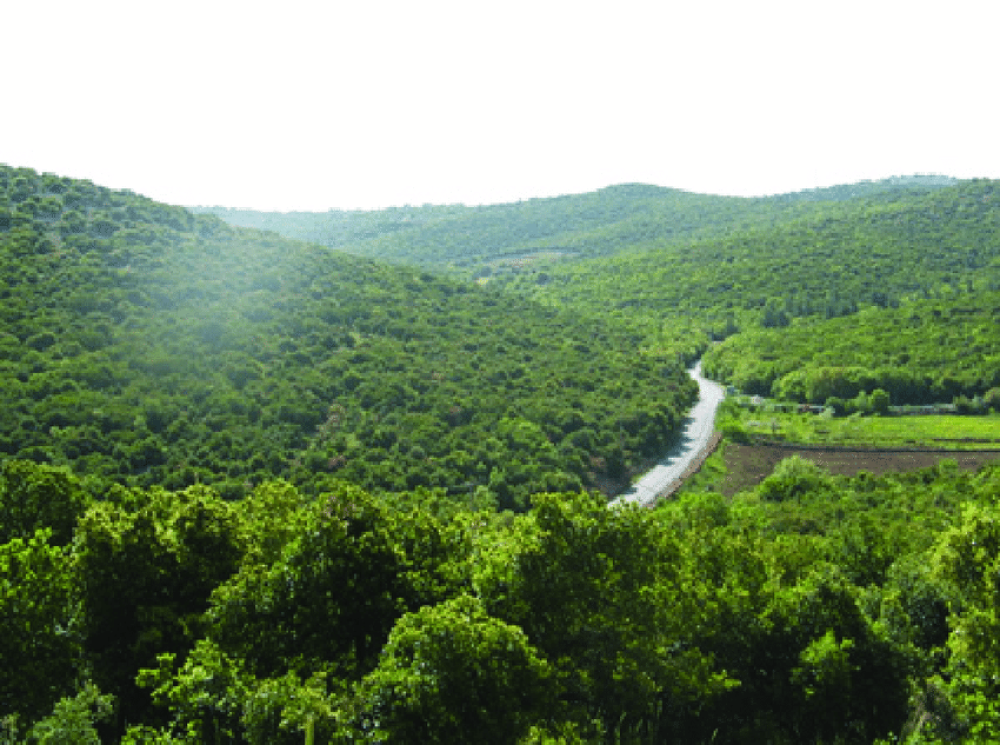

The Ajloun Forest Reserve, nestled in the Ajloun highlands of northern Jordan, is a pristine environment that has been attracting ecotourists and nature enthusiasts for years. Established by the Royal Society for the Conservation of Nature (RSCN) in 1988, this reserve is an important ecological and tourism development initiative designed to conserve the region's natural resources and provide sustainable tourism opportunities.
The tourism history of Ajloun Forest Reserve is relatively recent compared to the long-standing historical sites that Jordan is famous for, such as Petra and the Roman ruins of Jerash. However, the reserve has quickly become an integral part of Jordan's diverse tourism offerings, focusing on eco-friendly practices and nature-based experiences.
Ajloun Forest Reserve was originally established to protect the evergreen oak forests unique to the area. With its pleasant climate, captivating scenery, and rich biodiversity, including a variety of plant species and wildlife such as roe deer and wild boar, the reserve serves as a critical green lung and a haven for nature lovers.
Throughout the 1990s and early 2000s, the RSCN focused on developing the infrastructure required to transform the forest into a sustainable tourism destination. They established eco-friendly lodges, visitor centers, and hiking trails to enhance visitor experiences without compromising the integrity of the ecosystem.
The reserve introduced guided nature walks, bird watching tours, and even homestay experiences with local communities as a way to immerse visitors in the local culture and natural beauty of Ajloun. These initiatives also created employment opportunities for surrounding communities, thus ensuring that tourism development benefited both the environment and the local population.
Recently, there has been a shift towards more immersive and authentic travel experiences worldwide, and Ajloun Forest Reserve is no exception. Visitors are increasingly seeking out destinations that offer not only a connection with nature but also a genuine insight into the local way of life.
Experiential travel is gaining traction, with tourists participating in local conservation efforts, such as tree planting or learning about sustainable agriculture practices from local farmers. Eco-tourism is thriving, providing tourists with eco-friendly accommodation options, such as the reserve's cabins and campsite, which are designed to minimize their impact on the surrounding forest.
Another growing trend is adventure tourism, with activities like zip-lining and rock climbing being offered in and around the reserve, attracting a younger demographic of thrill-seekers as well as families looking for an active holiday.
Digital connectivity has also influenced tourism trends, as social media plays a significant role in travel planning. The reserve's picturesque landscapes have become popular backdrops for influencers and ordinary travelers alike, sharing their experiences online and inspiring others to visit.
With sustainable and experiential tourism at its heart, the Ajloun Forest Reserve continues to evolve, offering visitors from Jordan and around the world a chance to reconnect with nature while contributing positively to the local community and the environment.
In conclusion, the Ajloun Forest Reserve serves as a shining example of sustainable tourism in Jordan, showcasing the country's commitment to preserving its natural assets for future generations while providing meaningful and memorable experiences for all who visit.